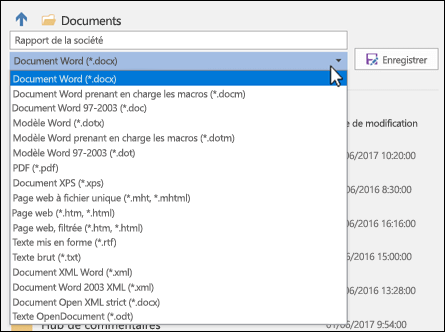
The substring method is then used to retrieve the path and the file name without the file extension. It is possible that there could be multiple dots in the file name therefore, the lastindexof method is used to retrieve the position of the last dot in the file name.

#MICROSOFT OPEN XML CONVERTER .DOCX FILES CODE#
This is similar to the code used yesterday and will not be discussed here. doc files are retrieved by using the Get-ChildItem cmdlet. The folder paths are stored in an array as shown here: You can specify more than one folder when calling the SaveWordDocAsDocx.ps1 script. This was discussed in yesterday’s Hey, Scripting Guy! Blog post and will not be repeated today. Next, the Microsoft Word application object is created. It is cast as a reference type because the SaveAs method from the document object requires the WdSaveFormat enumeration to be passed by reference. The WdSaveFormat enumeration is saved in the $saveFormat variable.
#MICROSOFT OPEN XML CONVERTER .DOCX FILES WINDOWS#
For information about working with enumerations in Windows PowerShell, you may want to refer to the Weekend Scripter articles I recently wrote. This is very useful when trying to look up information on MSDN. In addition, by creating the actual enumeration, you have documentation about what the enumeration is called. Well, you do not actually have to create the enumeration, but it makes the script more readable than simply assigning a random number. The first thing to do in the SaveWordDocAsDocx.ps1 script is to create the WdSaveFormat enumeration. $doc.saveas( $path, $SaveFormat::wdFormatDocumentDefault) Get-ChildItem -path $folderpath -include $fileType | $word = New-Object -ComObject word.application SJ, the SaveWordDocAsDocx.ps1 script will accept one of more folders as search paths, and it will convert all. The high today in Sydney is 65 degrees Fahrenheit-it is a great way to beat the heat and humidity of Charlotte. One nice thing about Australia this time of year is that whereas it was 96 degrees Fahrenheit today in Charlotte with 65 percent humidity for a heat index of 107 degrees Fahrenheit, it is winter in Australia. The following photo is one of my favorite seal pictures. I decided to look at some pictures I took while I was diving with the seals on my last trip down under. Because the Scripting Wife has gone to get her nails done, I got into the Tim Tams my buddy Brent brought me from Sydney, and I am drinking a cup of lapsang souchong tea (a tea that I have to put milk in when I drink it).


The Avalanches are a group I fell in love with when I was in Melbourne, Australia, a few years ago. As I read your email message, I was listening to The Avalanches on my Zune HD.

I was talking to one of my Microsoft friends in Australia the other day, and we were discussing him doing something similar to what you describe. I looked around but could not find a utility or a script I could use. Therefore, we have decided that we would like to convert all of the. If a user opens an old document (.doc) file extension in Microsoft Word 2010 and makes changes, they are prompted about saving the file in compatibility mode. Hey, Scripting Guy! I need to use Windows PowerShell 2.0 to convert Microsoft Word documents to the new document format.


 0 kommentar(er)
0 kommentar(er)
